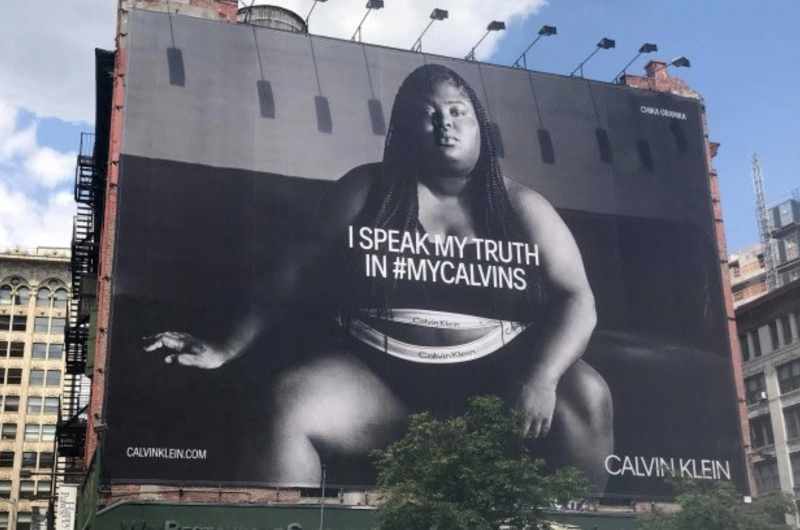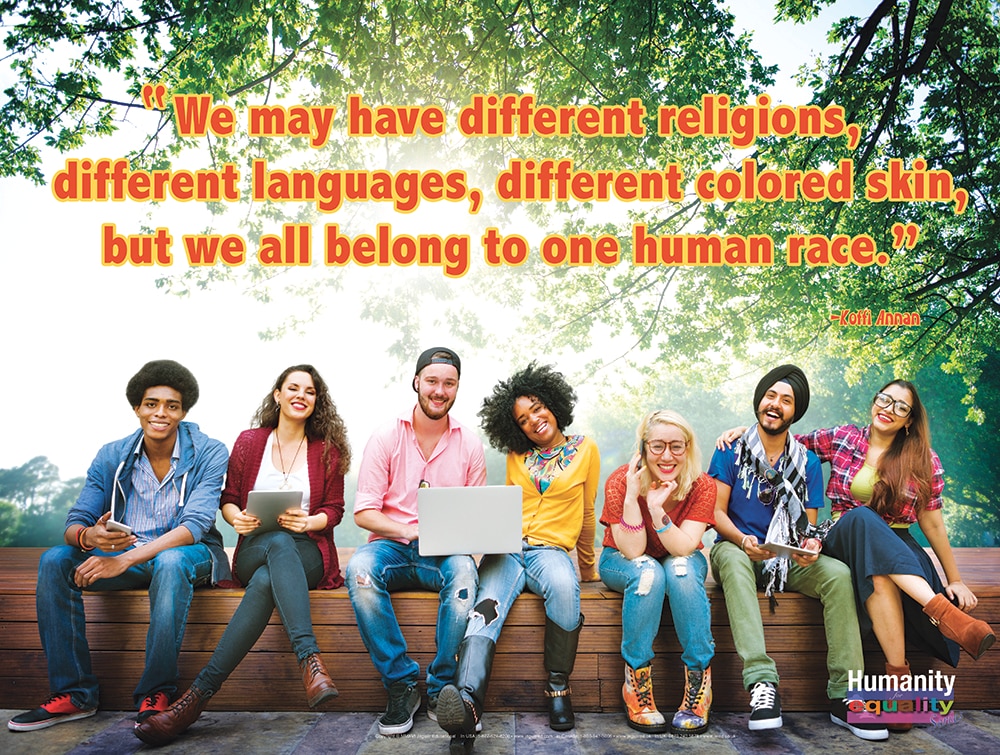Academic Hysteria, Part III
In the previous two parts of this essay (here and here), I discussed my experiences as a faculty member at a far-left American academic institution, and how the social justice hysteria was affecting what was going on at the school. What has been occurring more recently?
This is amusing, as I have experienced truly grotesque Black females talking about how “beautiful” they are; further, one can overhear comical examples of inflated self-esteem, such as such students, who are barely passing basic coursework, talking among themselves about how much money they will make as doctors or lawyers (possibly not so far-fetched, what with affirmative action and the move away from standardized tests and objective grades and toward “holistic admissions reviews”),and how they won’t take the last names of their potential husbands, but vice versa. (If they do become professionals, then the Black male peers they fantasize as their husbands will instead be pursuing White women.)
Read this, which is very similar to some of my own experiences.
After finishing grad school, I began teaching at universities across the US. It was as a professor that I began noticing patterns in black behavior: a sense of entitlement, a lack of discipline, a bad attitude, disrespectfulness, and aggressive behavior. And the more black students a college had, the worse their behavior was. I was always reluctant to share these observations with my colleagues for fear of being called a racist. … Most blacks have an entitlement problem. They feel that they can behave in any way they want because they are black, and if you call them out, they accuse you of racism.
Black students, particularly Black females, do indeed manifest the most outrageous entitled and obnoxious behavior. They have no shame to go to the offices of faculty and scream like lunatics at the faculty, demanding to be given credit for wrong quiz and exam answers, because the faculty doesn’t “understand my point of view” (in other words, if the Black students say a wrong answer should be right, then they must be given credit for it: my truth).

These students will cheat on exams, cry racism when caught, and then brag how “I can get away with anything” when the administration inevitably backs down. They will contact faculty and demand special treatment; for example, more time to complete projects because they are “real busy.” They’ll come late for exam reviews and demand that the faculty go over all that was missed; if you balk, then you are “racist.” And if you need to do practice interviews with these students for, say, law school or medical school interviews, and/or if you have to read any personal statements, all you’ll hear is the most extremely self-obsessed rambling about race. Everything is racist, everything revolves around their single-minded obsessive focus on their racial identify and their racial grievances. The legal system is racist. The medical system is racist. Medical instruments are racist. (I kid you not; I’ve read or heard statements about “racist stethoscopes” and “racist blood pressure monitors — apparently, these devices were designed by hateful Whites with the intention of “destroying Black bodies.) Higher rates of Black incarceration are due to a racist criminal justice system. If Blacks have higher rates of certain diseases — even when objective evidence suggests those differences are due to rampant Black obesity or from racial genetic differences — that is due to “the legacy of slavery” and “stress from White racism causing Black Fatigue.” Also, if there is an attractive White female professor or teaching assistant involved, the jealous Black female students spew their venom on their poor victims. That these students are academically incompetent, cognitively deficient, and lacking in logic and common sense goes without saying. If you put a “filler” “joke” answer to round out a multiple choice question answer list, you can bet one of these students will choose it. And they’ll have a bizarre explanation for their choice. And as stated above, they’ll demand credit for their answer.
Other non-White students often mirror the entitlement and poor behavior of Black students, although typically not as consistently or to the extreme. I note that Jewish students invariably identify as minorities, at odds with the dominant White American Christian culture, often making common cause with Blacks and other non-Whites as fellow victims of hatred and discrimination. Jewish students will invent special joint Jewish-Black celebrations, such as joint Passover dinner combined with a celebration of “Black emancipation” — Jews and Blacks together celebrating their similar d history of liberation.
Considering the issue of Black (and POC, in general) entitlement and poor behavior, we can consider the Ilya Shapiro controversy. It’s not enough that the Negroes wanted Shapiro out, they had other needs as well:
At another juncture, a student demanded that the dean cover for the classes that the activists had missed as a result of the sit-in, suggesting that the move should be part of a “reparations” package for black students. She followed up by insisting that students be given a designated place on campus to cry. “Is there an office they can go to?” she asked. “I don’t know what it would look like, but if they want to cry, if they need to break down, where can they go? Because we’re at a point where students are coming out of class to go to the bathroom to cry.”
“And this is not in the future,” she added. “This is today.”
The administrators took the law student’s query seriously. “It is really, really hard to walk out of class or a meeting in tears, and you should always have a place on campus where you can go,” Dean Bailin told her. “And if you’re finding that you’re not getting the person that you want to talk to or not getting the space that you need, reach out to me anytime — anytime — and we will find you space.”
Besides censoring academic critics of affirmative action, and besides demanding a dedicated crying space, the Black students also demanded that (White) classmates be “reminded” how much they owe to Blacks and to stop critiquing Black activists:
Yet another student pressed the deans to send out an email attacking BLSA’s critics. “Something that’s important is to remind our classmates that are attacking us that they are only here because our ancestors were sold for them to be here,” she said. “And I think it’s a very important fact that is not talked about explicitly enough, because we are still being attacked. So I just would appreciate in whatever message that’s going out [to the student body], that our classmates are explicitly reminded: Do not attack the people who were sold for you to have this opportunity. . . . That needs to be something that these people are reminded of, because they continue to attack us as if it is not on our backs that they are even here.”
Of course, in reality, Blacks need Whites and not the other way around; further, it is the case that everything Blacks have “achieved” — or have been handed to them — in America has been on the backs of the long-suffering White American people, who are the economic equivalent of slaves since they must work to pay taxes that support Blacks and other People of Colors. See this as well.
Of particular interest is this anti-Shapiro tweet by a Black professor, Aderson Francois: aderson francois 🇭🇹 14th Amendment Baby @abfrancois Replying to @ishapiro
Mr. Shapiro, as one of your future Georgetown colleague, I am curious: is your phrase “lesser Black woman” meant to describe a particular Black woman or do you intend “lesser Black woman” to encompass the general set of Black women under consideration for the seat?
Of course, it should be “colleagues” not the grammatically incorrect “colleague.” Any halfway literate middle school student would realize that, but apparently this “professor of law,” who is a Georgetown faculty member, can’t reach a twelve year old’s standard of English proficiency.
Thus, I can ask: Mr. Francois, as one of the readers of your tweet, I am curious: are you a functionally illiterate affirmative action hack or did you intentionally set out to prove Shapiro’s criticism of affirmative action to be correct?
An anecdote comes to mind. I remember a Black male professor who came to my institution as a candidate for a position at my school. I saw this candidate walking with the “chief of diversity” with the Negro stating that he “likes what he sees” and implying that the decision whether he becomes a faculty at the institution is up to him alone (entitlement complex again). What I noticed is that this Negro’s shoes were completely untied; he was trailing the laces behind him like tails, with the loose shoes flopping around as he walked. I saw the same person a while later and the shoes were the same. I remember thinking what kind of buffoon comes to an interview and doesn’t know or doesn’t care that his laces were untied and he was flopping around all day like a retard. Fortunately, and surprisingly, this person was not hired, but he exemplifies many Negro academics — a clownish inept buffoon who is nothing more or less a creation of quotas and set asides, reeking of unjustified self-esteem and a sense of extreme entitlement. Black and other Colored students that I deal with on a regular basis exhibit the same behaviors.
Speaking of hiring, it is interesting that every time new faculty and, even more importantly, new administration, are hired at my institution, they always turn out to be hard leftists. In my last essay, I mentioned the political contribution database of the Federal Election Commission (FEC) and how the data there can reveal the politics of academics. Indeed, new hires at my institution typically show up at that database, reflecting their extreme “progressive” politics. Possibly this may inform us on how leftist control of academia is maintained. It is interesting how the current crop of faculty and administration always manage to recruit and hire individuals who are exclusively on the Left. One can argue this is simply due to the law of probability; the vast majority of academics are leftists, so one would expect that even a random draw of candidates would be enriched in SJW types. There may be some truth in that, but that is hardly the full picture.
First, nowadays, many institutions require candidates to openly express a commitment to “woke” politics; indeed, many institutions require candidates to present tangible proof of how committed they are, and what they did to promote “diversity, equity, and inclusion” at their previous employment), and to present plans on how they would promote those objectives if hired for the present position being offered. But this is still not at the fundamental level by which leftist academic hegemony is maintained, as that hegemony was entrenched long before “diversity statements” became a requirement of the hiring process. No doubt I’m not the only one at my institution studying the FEC database. Would a professor with a record of donating to, say, the Trump campaign, be hired? Would they even be invited to an interview in the first place, regardless of their objective qualifications? And even if they avoided that pitfall, and the even more obvious pitfall of leaving a digital political footprint via social media and other avenues of expression, then there is the interview process itself. Even if they got through meeting with the “Dean of Diversity and Equity” — and even if we consider the time before such deans existed — the candidate has to get through the gauntlet of interviews and “informal” dinner meetings, etc. where astute interviewers will try to extract from the candidate some inkling of their political and social views. A comment dropped, a facial expression, a hesitation, anything can be a clue to disagreement with SJW politics; conversely, the candidate can demonstrate genuine enthusiasm for leftist ideas and cheerfully agree with the comments and opinions ever so “casually” dropped during conversation. And if a “dissident” somehow gets hired, they can always be weeded out via the renewal, promotion, and tenure process.
How did I get in then? I was hired long ago when the institution was much smaller and did not have the same political vetting system in place; further, I presented a very neutral persona and did not have a digital trail of political contributions or other “warning signs” that I was not one of them. I was very careful in interviews and in the “informal” dinner meetings. I went into the process with “eyes wide open,” assuming everyone I interacted with was a leftist hack looking to uncover hidden signs of “unacceptable beliefs.” And, as stated, the vetting was not as well organized as it is today; I slipped through the cracks. But my advancement has been negatively affected by not being a supporter of the leftist agenda. Very likely, in today’s hysterical climate, I would not be hired. Currently, as I stated above, it is not sufficient to merely avoid what is perceived as “negative beliefs” but need to embrace, and show evidence for, “progressive” politics.
And let us consider the flip side of this. Even if a rightist does somehow get in and survives the rough-and-tumble of academic politics in which the word ‘politics’ means far more than the usual beyond petty academic infighting to include rigid adherence to progressive orthodoxy, they will likely find the environment unpleasant and unwelcoming, and may voluntarily leave academia for other occupations. Thus, through a variety of direct and indirect stratagems, leftist academic hegemony is maintained.




 Michelle Alexander’s The New Jim Crow: Mass Incarceration in the Age of Colorblindness is a text I’ve come across many times over the years. In fact, I don’t know if there is a single time I have walked into a major bookstore and have not seen the book displayed in prominence on an end cap or center aisle table. I’ve encountered all the arguments made within the text over the years in articles, during debates, and in university classrooms as an undergraduate. Perhaps the significance of Alexander’s work is best assessed in the foreword by Cornel West: “The New Jim Crow is the secular bible for a new social movement in the early twenty-first-century America.” Although the data and arguments found within have been seen both before and after Alexander’s work, this is perhaps the most definitive and comprehensive work on the topic of Black crime and mass incarceration in America, as seen from the left.
Michelle Alexander’s The New Jim Crow: Mass Incarceration in the Age of Colorblindness is a text I’ve come across many times over the years. In fact, I don’t know if there is a single time I have walked into a major bookstore and have not seen the book displayed in prominence on an end cap or center aisle table. I’ve encountered all the arguments made within the text over the years in articles, during debates, and in university classrooms as an undergraduate. Perhaps the significance of Alexander’s work is best assessed in the foreword by Cornel West: “The New Jim Crow is the secular bible for a new social movement in the early twenty-first-century America.” Although the data and arguments found within have been seen both before and after Alexander’s work, this is perhaps the most definitive and comprehensive work on the topic of Black crime and mass incarceration in America, as seen from the left.



